How to keep a Christmas tree alive – expert advice to make it last
Discover how to keep a Christmas tree alive with knowhow from Monty Don
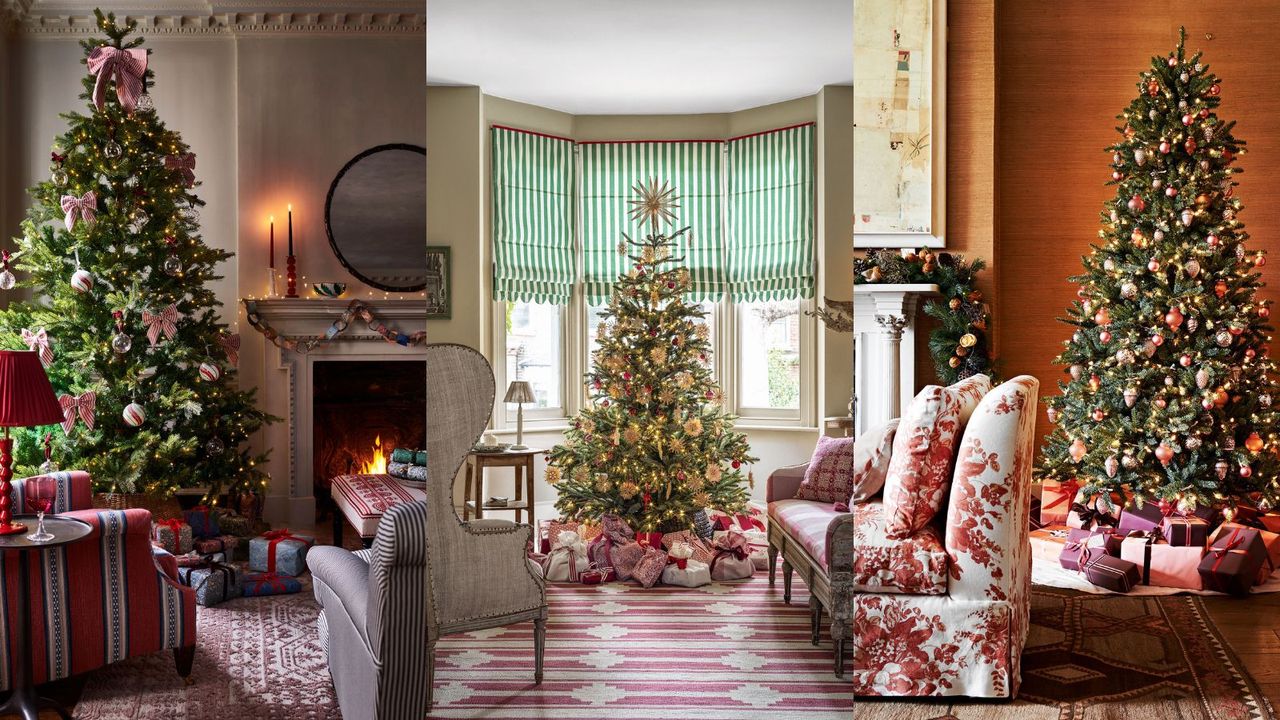
Sarah Warwick
It’s important to know how to keep a Christmas tree alive to ensure it’s a worthy centerpiece of the celebrations. A warm home isn’t the ideal environment for a real tree, so understanding the best techniques for preserving its beauty are a must.
To enjoy your Christmas tree ideas for the maximum length of time, you may well want to put up the tree as early as possible, and that makes good care particularly vital so it doesn’t shed its needles and look less than lovely before the holidays are over.
We’ve looked to the experts to reveal how to keep a Christmas tree alive. BBC Gardener's World presenter Monty Don shared advice on his blog, and we’ve got the knowhow you need from other pros, too. Learn from the experts and your tree can look healthy and full, and provide its wonderful aroma, for longer.
How to keep a Christmas tree alive
If you want to stop your Christmas tree topper from flopping and your branches shedding needles or bowing under the (minimal) weight of your tree ornaments, follow these expert tips from Monty Don and others on how to keep a Christmas tree alive.
Can you stop a Christmas tree from dying?
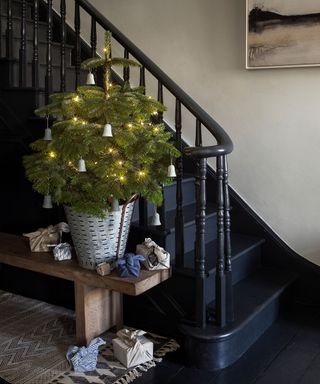
If you have bought a cut tree, then we’re afraid your tree is already effectively dead or dying, and the best you can do is to work to keep it looking as fresh as possible, for as long as possible.
You can, however, go for a planted tree in a pot that will remain alive and growing during the festive season. This is great if sustainability is an increasingly key Christmas tree theme for you, as it means you can even keep your tree for next year and years after that.
‘Do get one with roots if possible, even if you are not intending to plant it,’ says Don, writing on his blog. This is a surefire way to guarantee those needles will stay firmly on the tree. You can even replant it in the garden after.
‘Pot it into as large a container as you have and fill this with sharps and/or compost. Sand is perfectly good for the few weeks it will be indoors. Water it and keep the sand moist,’ he adds.
How do you keep a Christmas tree from drying out?
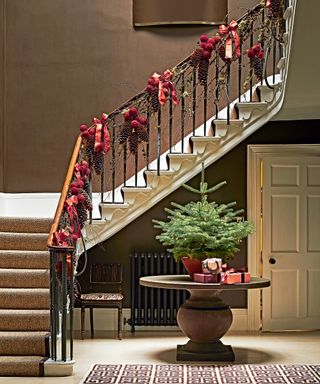
Both planted and cut trees are in danger of drying out – and the effect on the latter is pretty disastrous. Even before you think about how to decorate a Christmas tree, the first thing you should do is to place it in the coolest part of the house you can find.
‘Never place your Christmas tree by a radiator,’ warns Don. While a cozy warm room might appeal to us, a tree will respond by immediately shedding its needles. The same goes for heat registers, space heaters and stoves, none of which are a Christmas tree’s ideal companion if you want it to last as long as possible.
‘All these evergreen firs have adapted to cope with cold winter weather and will react to central heating heat by dropping their leaves in order to conserve moisture,’ explains Don.
What do you put in a real Christmas tree to keep it alive?
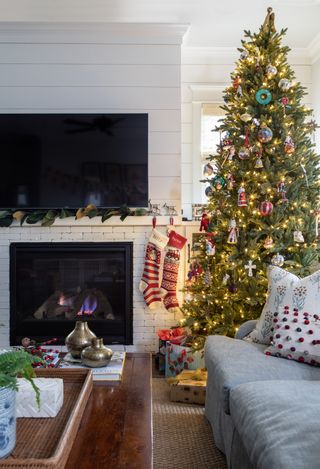
The next step in keeping a Christmas tree looking lush is ensuring it is well-hydrated, especially if you have a cut tree. As well as helping to prevent needle-dropping, healthy branches and leaves will make a Christmas tree look fuller too.
‘Buy a tree holder for a cut stump with a reservoir and keep it topped up with water,’ advises Monty Don. ‘Treat it like a cut flower. This will do more than anything to stop it shedding its needles.’
‘Water, water, water,’ agrees interior designer Katie Davis of Katie Davis Design. ‘I am always guilty of forgetting to water our tree at home,’ she admits.
What is the best type of Christmas tree to buy?
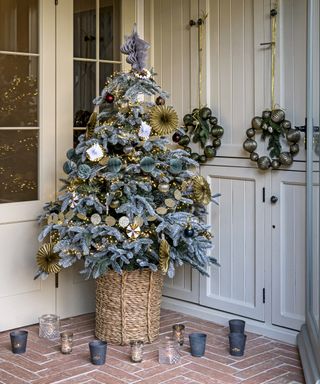
If you’re skipping on the alternative Christmas tree ideas this year and want something atmospherically traditional, you really can’t get better than a real tree.
The first step to getting the most out of a real Christmas tree is picking the right variety. Don explains that the Norway spruce, the Nordmann fir or the Colorado spruce are all great options.
'All three are very good, have specific virtues and can last for a long Christmas season if looked after properly. All three will also grow in most gardens if they are bought with healthy roots and planted carefully as soon as possible after Christmas,' he says. However, Monty's particular favourite is Colorado or blue spruce, or the Picea pungens.
'Although it comes from the southern states, it originates from a high altitude, so is very hardy and grows into a tall, very straight, rather beautiful tree, with glaucous blue needles the colour of cardoon or artichoke leaves,' Don says.
Plus, the high mountainous conditions give the tree a stiff habit that makes it even more attractive to Don. 'If you do plant one in the garden, it will grow much stronger if given maximum sunlight,' he adds.
Alternatively, follow the lead of interior designer Katie Davis. ‘I always go traditional on the tree. Douglas fir with white lights,’ she says.
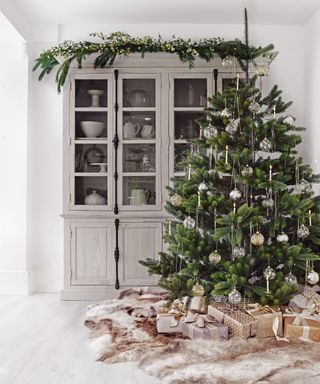
Does sugar help keep a Christmas tree alive?
It is said that sugar can help keep a Christmas tree alive. But the experts at Michigan State University Extension say it’s not the answer. ‘Though there are many commercial products and home remedies claimed to help keep a tree fresh, research has shown that the best additive is just plain water and plenty of it,’ they say.
How much water are we talking? The MSU experts say to reckon on a Christmas tree using 1 quart of water (1ltr) per inch (2.5cm) of trunk diameter per day, meaning that a tree with a 4in (10cm) diameter trunk needs more than 1 gallon (4.5ltr) per day. Yup, keep watering rather than trying tricks with sugar (or sodas, which is another tip we’ve seen).
Can I keep my Christmas tree alive until next year?
Opt for a tree with roots and it is possible to keep it alive until next year. There might be a couple of options when it comes to container-grown trees, though.
Your climate may mean you can plant the Christmas tree in the backyard. If that’s your plan, check out the requirements of the different species of Christmas trees to be sure you can plant the tree in a location that will meet its needs and that you have adequate space.
If you live in a northern climate, keep the tree in a shed or a garage without heat until spring before planting (and don’t forget to water as necessary in the meantime).
You may want to bring the Christmas tree inside next year, and if that’s the case, don’t plant it out. Instead grow it on in a container. The RHS (Royal Horticultural Society) says that it should be moved into a larger pot each year. Remember, though, that there will be a maximum size pot that can be moved easily into the house, the experts caution.
Sign up to the Homes & Gardens newsletter
Design expertise in your inbox – from inspiring decorating ideas and beautiful celebrity homes to practical gardening advice and shopping round-ups.
Rebecca is the News Editor on Homes and Gardens. She has been working as a homes and interiors journalist for over four years. She first discovered her love of interiors while interning at Harper's Bazaar and Town & Country during my Masters in Magazine Journalism at City, University of London. After graduating she started out as a feature writer for Women's Weekly magazines, before shifting over to online journalism and joining the Ideal Home digital team covering news and features. She is passionate about shopping for well-crafted home decor and sourcing second-hand antique furniture where possible.
- Sarah WarwickContributing Editor
-
 The 'Curated Clutter Method' is perfect for procrastinators – put an end to 'the all-too-familiar feeling of taking on too much'
The 'Curated Clutter Method' is perfect for procrastinators – put an end to 'the all-too-familiar feeling of taking on too much'It takes breaking items down into categories to the next level
By Ciéra Cree Published
-
 We found the exact vintage-inspired wallpaper Emily Henderson used to pattern drenched her powder room – and it's perfect for making small spaces look bigger
We found the exact vintage-inspired wallpaper Emily Henderson used to pattern drenched her powder room – and it's perfect for making small spaces look biggerRecreate her bold design with the exact Graham & Brown wallpaper, and bonus, it's currently on sale
By Molly Malsom Published